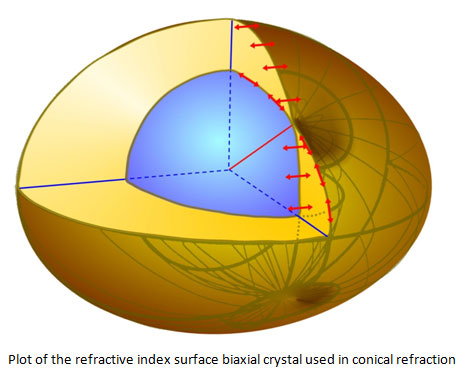TCD Physicists find New Application for Optical Discovery made in Trinity College in 1833
Posted on: 11 January 2011
The first observation on internal conical refraction in a biaxial crystal was made by Erasmus Smith’s Professor of Natural and Experimental Philosophy, Humphrey Lloyd at Trinity College Dublin back in 1832 (December 14th). Just two months earlier, this remarkable optical effect had been predicted by William Rowan Hamilton, Andrews Professor of Astronomy at Trinity. It arises when a narrow beam of light is directed along one of the optic axes of the biaxial crystal; the light spread out as a cone inside the crystal and emerges as a cylinder of light. Though the discovery of conical refraction is an exemplary case of theoretical prediction followed by experimental confirmation, no significant applications have emerged in the intervening years.
Now, exactly 178 years later researchers at Trinity’s School of Physics have published a paper describing how conical refraction can be used to make a novel optical trap for microscopic objects suspended in liquid. (Optics Express Vol. 18, 27319 (2010)). This new device uses the unusual polarisation of the conically refracted beam to generate a crescent-shaped beam. The microspheres are trapped in the region of highest intensity and can be rotated on a small circle by simply rotating the polarisation of the input light. White blood cells have also been trapped and rotated using this optical setup. The conical refraction trap should find application in the manipulation of living cells and driving micromotors.

Commenting on the significance of the discovery, Professor Lunney said: “Our work on conical refraction started out as a demonstration to celebrate the achievements of Hamilton and Lloyd. However, with high quality crystals, lasers and help from Science Foundation Ireland we were able to make some original contributions to the subject and demonstrate new applications”
The work was carried out by research students David O’Dwyer, Ciaran Phelan and Kyle Ballintine and was directed by Professors John Donegan and James Lunney at the School of Physics.
